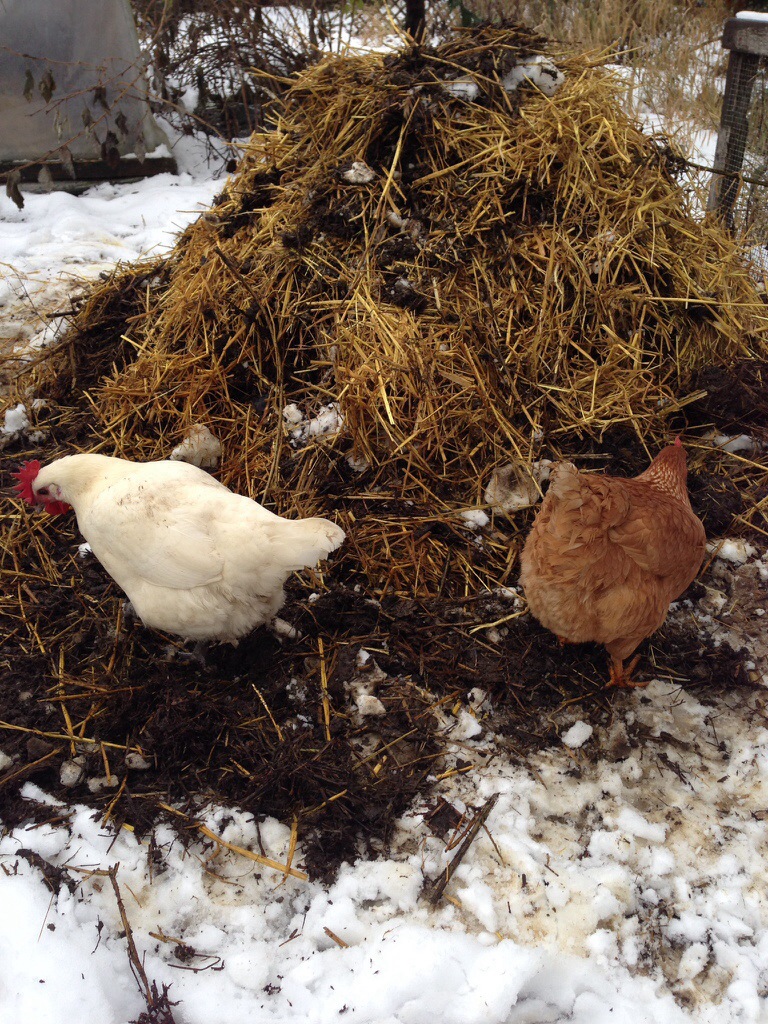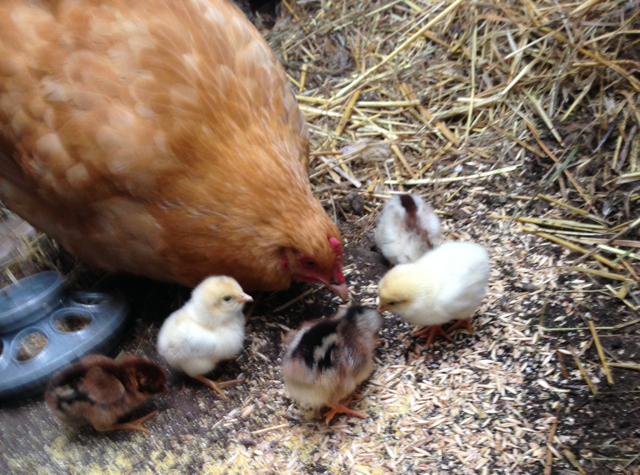
On a winter day when snow blankets the ground, there’s always something good to eat in the compost. When it is time to turn a compost pile I can always count on chickens rushing over to feast on worms and bugs in the pile. Chickens are far from vegetarians. Skilled hunters, it is a good thing they are small. If they towered over us we would be their dinner.

It’s day two of the chicks, but you can’t see them because mother is being very protective. Hopefully I’ll be able to get a good picture soon.

And here is one of the Turken hens. Originally from Romania, Hungary, and Transylvania, they are a curious, friendly breed. I ended up with Turkens when someone nearby unexpectedly ended up with some this summer and asked me to take them.




